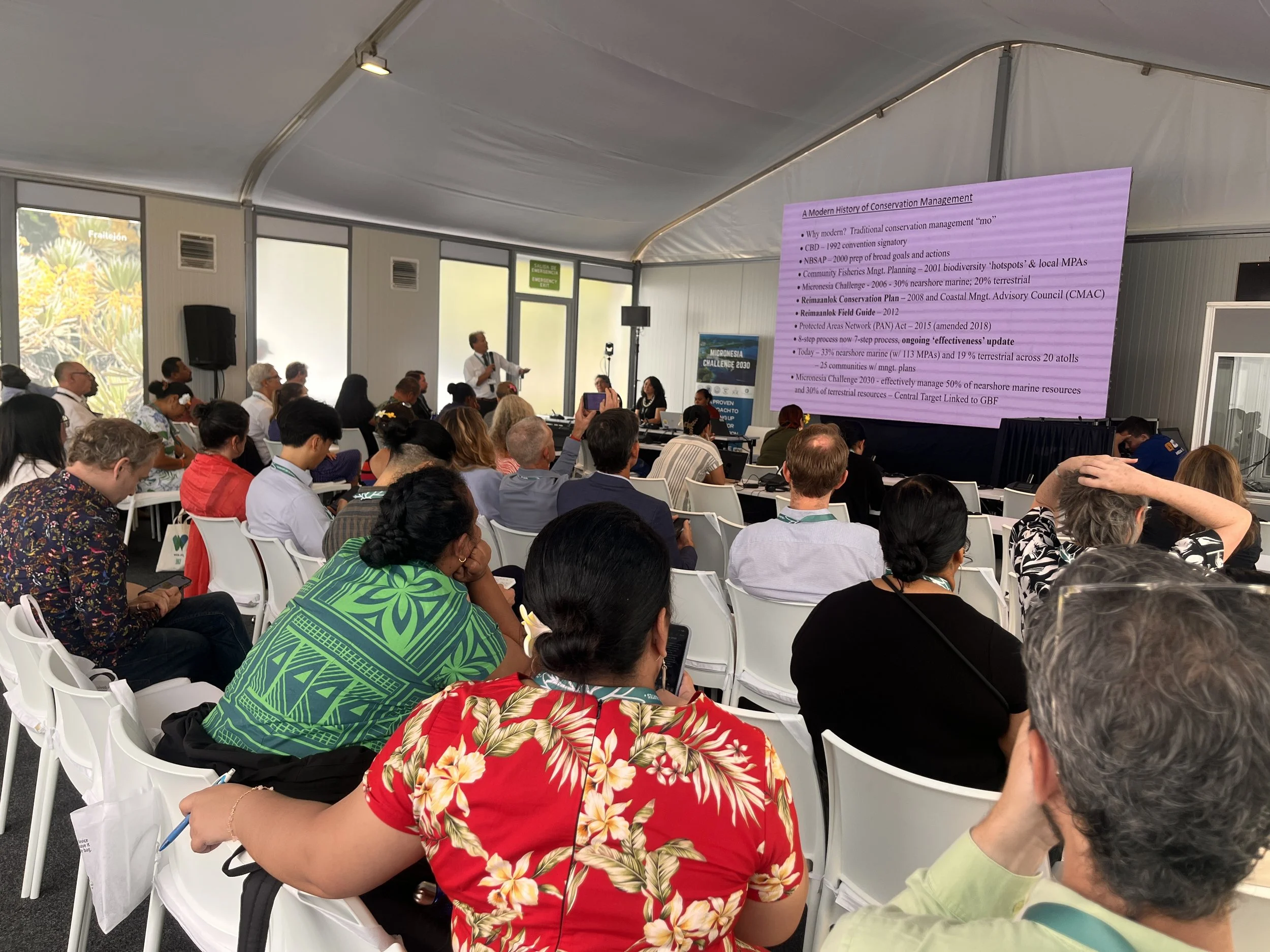Micronesia Challenge 2030: Scaling New Heights for Conservation at COP 16
October 31, 2024, | Cali, Colombia – The Micronesia Challenge (MC) Jurisdictions celebrated a landmark moment at the UN Biodiversity Conference, or COP16, where they captivated a global audience with their ambitious conservation goals and groundbreaking achievements under the Micronesia Challenge 2030 (MC2030). The biggest conference on nature conservation worldwide, this milestone event highlighted the MC Jurisdictions as a driving force in climate resilience and biodiversity preservation and reaffirmed Micronesia's pioneering role on the world stage.
Representatives from the MC Jurisdictions sharing highlights.
Representatives of the MC Jurisdictions shared inspiring stories of success, showcasing thriving coral reefs, lush rainforests, and vibrant marine life, all preserved through decades of commitment and innovation. The original Micronesia Challenge, established in 2006 and announced globally at an earlier UN Biodiversity Conference, pledged the region to conserve 30% of nearshore marine resources and 20% of terrestrial resources by 2020—a target they met with resounding success. Back in 2006, this was a unique commitment in terms of both scale and ambition. Building on this momentum, the MC Jurisdictions have now set their sights even higher, aiming to protect 50% of marine and 30% of terrestrial areas by 2030. For context, Micronesia's exclusive economic zone (EEZ) is roughly 7.4 million square kilometers, dwarfing that of many continental countries.
“We take our responsibility as the ‘Stewards of the Sea’ very seriously,” said Deputy Permanent Representative for FSM UN Mission in NY, Mrs. Universe Yamase Lawrence. “The stewardship legacy of my people stretches back millennia, and today, we celebrate a modern conservation story that has inspired similar movements worldwide. Our story is about unity and shared purpose, proving that small island nations can lead the charge in conservation,” she explained.
Deputy Permanent Representative for FSM UN Mission in NY, Mrs. Universe Yamase Lawrence giving her opening remarks at the MC Event at COP 16.
A standout component of MC2030’s strategy is its Sustainable Finance Plan, designed to provide long-lasting funding through the Micronesia Conservation Trust (MCT). This visionary model ensures that conservation efforts endure for future generations, creating a template that can inspire similar initiatives around the globe. Over its 18-year history, the Micronesia Challenge has seen continued progress through 22 leadership changes in jurisdiction governments, trained over 3,000 participants, and created more than 70 protected areas. It has also enacted 20 fisheries management policies, standardized marine monitoring protocols, and secured over $85 million in conservation funding, including a $2 million regional endowment.
The MC Jurisdictions’ efforts resonated across COP 16, with global leaders lauding the program’s achievements and collaborative, innovative approach. During the conference, Micronesia Challenge jurisdiction representatives shared lessons learned with peer entities that operate across other SIDS regions, such as the Caribbean and the Indian Ocean. They also held more detailed briefing sessions with other Pacific islands that want to implement similar initiatives, namely the Solomon Islands and Vanuatu.
The MC Jurisdictions called on fellow nations to join them in surpassing the Global Biodiversity Framework’s 30x30 target, advocating for the revitalization of Island Biodiversity as a dedicated Program of Work. “We have the vision, we have the political will, and local communities are driving implementation,” Lawrence concluded. “What we need now is durable financial support and long-term stable funding to ensure the resilience of these globally important resources.”
MC and MCT after briefing with the Solomon Islands and Vanuatu.



